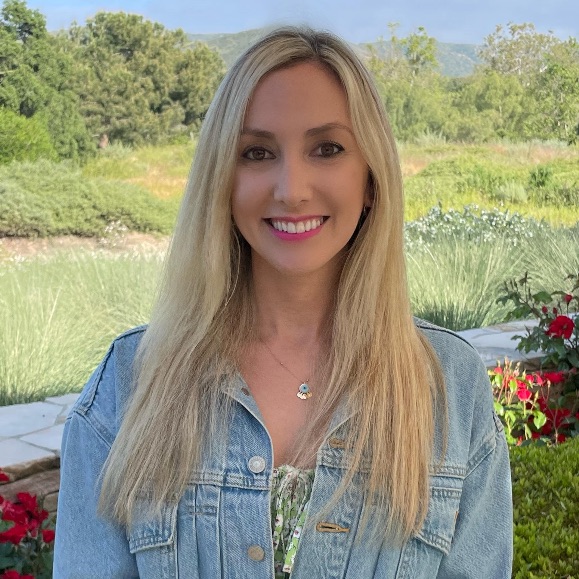Navigating Phobias Therapy Options in San Jose
Navigating Phobias therapy options in San Jose can start with choosing between in-person and virtual care. In-person sessions offer a grounded setting with local clinicians across neighborhoods like Downtown San Jose, Willow Glen, and the Rose Garden, which can be helpful for exposure-based strategies. Virtual teletherapy provides flexible access for busy schedules, tech commuters, or those along VTA light rail, Caltrain, or the new BART Berryessa/North San José extension, reducing travel stress that can trigger symptoms. Individual therapy offers personalized plans for specific Phobias, while group therapy adds peer support and real-world coping practice. MiResource makes it easy to compare providers by location, specialization in Phobias, and therapeutic approach so you can find a good fit quickly.
If you prefer weekend or evening sessions near Santana Row or Almaden Valley, or need bilingual support common in diverse San Jose communities, MiResource helps filter by availability and language. You can review clinicians who use CBT, exposure therapy, or mindfulness-based methods and see which offer sliding-scale fees or accept your insurance. For those who want hybrid care, many San Jose providers offer both office visits and teletherapy, allowing you to balance convenience with connection. Group options, including skills-based programs in Evergreen or Japantown, can build confidence through shared practice. With clear profiles and map-based search, MiResource is a trusted, easy-to-use tool for exploring and comparing Phobias providers across San Jose.
Organizations that offer Supportive Services for Phobias in San Jose
Organizations across San Jose offer supportive services for people living with phobias, including education, peer groups, and referrals. NAMI Santa Clara County runs free support groups and family education near Downtown and San Jose State University, with helpline guidance on coping skills and treatment options. Santa Clara County Behavioral Health Services provides an Access Call Center, crisis services, and culturally responsive care across East San Jose, Willow Glen, and Alum Rock. You can also call or search 211 Santa Clara County to find local support groups, sliding‑scale counseling, and social services in neighborhoods from Japantown to Evergreen. Use MiResource to find licensed Phobias therapists in San Jose.
Community providers complement county and peer-led offerings. Momentum for Health offers outpatient therapy, groups, and case management in sites across North San Jose and near Diridon Station, with options for Medi‑Cal and uninsured clients. AACI provides culturally competent counseling, language support, and trauma‑informed care serving Little Saigon and the Story Road corridor. DBSA Silicon Valley hosts peer-led mood and anxiety support groups—helpful for phobia-related anxiety—accessible to residents from Berryessa to Willow Glen. For hospital-based care, Santa Clara Valley Medical Center’s Behavioral Health services on Bascom Avenue near Santana Row offer evaluation, outpatient programs, and coordination with crisis resources (). If you need specialized therapy for phobias, you can use MiResource to match with licensed San Jose clinicians.
Emergency Care Services for Phobias in San Jose
If you’re in immediate danger, call 911 or go to the nearest emergency department (e.g., Santa Clara Valley Medical Center ED, 408-885-5000; Regional Medical Center of San Jose, 408-259-5000). For 24/7 local crisis help, call the Santa Clara County Suicide & Crisis Hotline at 855-278-4204 or the County Behavioral Health Services Call Center at 1-800-704-0900 (TTY 711) and request the Mobile Crisis Response Team. You can also walk in or call the Mental Health Urgent Care (871 Enborg Ct., San Jose) at 408-709-2300 for same-day support. National help is available via the 988 Suicide & Crisis Lifeline (call/text 988, chat at 988lifeline.org) and SAMHSA’s Helpline at 1-800-662-4357.
The Essentials of Phobias
Phobias are intense, persistent fears of specific objects or situations that are out of proportion to the actual danger and lead to avoidance or significant distress, often lasting six months or more and interfering with daily life (American Psychiatric Association, DSM-5). They can trigger rapid heartbeat, shortness of breath, or a strong urge to escape, even when a person recognizes the fear is excessive (National Institute of Mental Health). Clinicians group Phobias by focus—such as animals, heights, flying, injections, or enclosed spaces—but the common thread is overwhelming fear and avoidance (American Psychiatric Association, DSM-5). Understanding Phobias helps people in San Jose name what they’re experiencing, reduce shame, and take the first step toward support.
Phobias are common and treatable, and learning about them empowers individuals and families to seek effective care, like gradual exposure therapy (a step-by-step approach to facing fears) and skills for managing physical symptoms (National Institute of Mental Health; World Health Organization). Recognizing the signs—persistent fear, avoidance that disrupts work, school, or relationships, and distress when confronted with the trigger—can guide timely help from local clinicians in San Jose (American Psychiatric Association, DSM-5). Early support can prevent Phobias from shrinking your world and restore confidence in everyday situations (National Institute of Mental Health). With compassionate care and evidence-based treatment, most people with Phobias improve significantly.
Recognizing the Signs and Symptoms of Phobias
Noticing patterns of fear and avoidance early can help San Jose residents address Phobias before they get in the way of daily life. The list below highlights the most common signs and symptoms of Phobias and can guide you toward getting supportive, professional help if needed.
- Strong, sudden fear that feels out of proportion to the situation or object
- Intense urge to avoid places, activities, or things—even when they’re part of everyday life in San Jose
- Physical reactions like a racing heart, shortness of breath, sweating, or shaking
- Feeling out of control or fearing you’ll “lose it,” sometimes leading to a panic attack (a surge of overwhelming fear)
- Persistent worry about encountering your trigger and planning your day around it
- Trouble concentrating, sleeping, or relaxing because of ongoing fear
- Strain on work, school, relationships, or errands—skipping events, routes, or tasks to sidestep Phobias
Exploring the Underlying Causes of Phobias
Phobias affect many people in San Jose, and they usually arise from a mix of influences rather than a single cause. Understanding these overlapping factors can reduce stigma and build empathy. Below is a clear breakdown to help you see how biological, psychological, and environmental elements can work together to shape Phobias.
- Biological causes:
- Family history or genetic sensitivity
- Brain chemistry differences (e.g., heightened fear response)
- Temperament traits, like being naturally more anxious
- Psychological causes:
- Learned associations from a scary experience
- Modeling a parent’s or peer’s fear
- Thinking patterns like catastrophizing (imagining worst-case scenarios)
- Environmental causes:
- Traumatic events (e.g., dog bite, car crash)
- Ongoing stress at school, work, or housing
- Cultural messages or media that amplify certain dangers
The Impact of Phobias on Daily Life
Phobias can touch many parts of daily life, often in ways that feel exhausting or isolating. Whether you’re navigating busy San Jose streets, taking public transit, or making plans with friends, everyday tasks can start to feel overwhelming when fear takes the lead. These challenges are real, but they’re also common—and with understanding and support, life can become more manageable. If you or someone you love is affected by Phobias, know that help is available here in San Jose.
- Work or school performance: missed days, avoiding certain tasks or places, trouble concentrating
- Relationships and social life: canceling plans, avoiding gatherings, strain with friends, family, or partners
- Physical health: sleep problems, muscle tension, headaches, fatigue from constant alertness
- Emotional well-being: persistent worry, shame, guilt, or feeling “on edge”
- Daily routines and errands: difficulty driving, using public transit, shopping, or attending appointments
- Hobbies and enjoyment: giving up activities you love due to fear or avoidance
Evidence-Based Treatments for Phobias
Phobias are highly treatable, and many people see meaningful symptom relief and a better quality of life with proven, evidence-based care. If you’re in San Jose and living with Phobias, you’re not alone—effective help is available. The right plan can reduce fear, build confidence, and help you get back to what matters. Reaching out to a trained professional is a strong first step.
- Cognitive Behavioral Therapy (CBT) with Exposure: A structured approach that gradually and safely helps you face feared situations or objects, teaching new coping skills and reducing avoidance.
- Virtual Reality Exposure Therapy (VRET): Uses immersive technology to practice facing fears in a controlled, realistic setting when in‑person exposure is hard to arrange.
- Medications (SSRIs or SNRIs): Daily antidepressant medicines that can lower overall anxiety; some people may also use short‑term options (like beta‑blockers) for specific situations.
- Mindfulness and Relaxation Skills: Breathing exercises, muscle relaxation, and grounding techniques that calm the body and make exposure work easier.
- Skills-Based Group Therapy or Support Groups: Guided groups—local to San Jose or online—offer education, practice, and encouragement from others working on similar Phobias.
- Lifestyle Supports: Regular sleep, movement, and limiting caffeine or alcohol can reduce baseline anxiety and make other treatments more effective.
Things People Ask About Phobias
- What are some common myths about Phobias that aren’t true?
Myth: Phobias are just overreactions you can “snap out of”; Truth: Phobias are real anxiety disorders involving intense, automatic fear responses that aren’t a choice.
Myth: Phobias are rare or only about snakes and heights; Truth: Phobias are common and can involve everyday situations like driving, flying, or medical and dental care.
Myth: Treatment is only medication or takes years; Truth: Evidence-based therapies like CBT and gradual exposure often help in weeks to months, sometimes without medication.
If you or someone you care about in San Jose is dealing with Phobias, you’re not alone—compassion and effective help are available.
- How do I talk to friends or family about my Phobias without feeling judged?
Pick a calm, private time to talk—like after a low-stress activity—so you can explain what triggers your Phobias and what helps, using clear “I” statements. Set boundaries up front (e.g., “Please don’t minimize this” or “I’m not ready for advice, just listening”) and let them know exactly how they can support you. Share brief resources that make it easier to understand Phobias, such as NAMI Santa Clara County guides, Santa Clara County Behavioral Health Services, or a short article or therapist directory link. If you’re in San Jose, suggest a follow-up coffee or walk to check in, and remind yourself that asking for empathy is a strength—not something to apologize for.
- Can Phobias get better on its own without professional help?
Phobias can sometimes ease over time as people slowly face feared situations or learn coping skills on their own, but progress is often uneven and avoidance can keep symptoms going. Many find short-term relief, yet lasting improvement usually comes faster and more reliably with professional support like CBT, exposure therapy, or guided self-help. If you’re in San Jose, accessible options—from brief therapy to telehealth—can tailor strategies to your triggers and lifestyle. Getting help doesn’t mean your fear is “severe”; it’s a practical way to build confidence and make gains that stick.
- What should I expect during my first Phobias therapy session?
At your first Phobias therapy session in San Jose, your therapist will start with warm introductions, explain confidentiality, and invite you to share what brought you in at your own pace. You’ll talk about your specific fears, recent triggers, and how they affect daily life here—whether that’s work in Silicon Valley, school, or getting around town. Together, you’ll review relevant background (health history, past therapy, supports) and agree on initial goals, like reducing avoidance and learning a few coping tools for the week. You’ll leave with a clear plan and reassurance that sessions can be in-person or virtual to fit your schedule and comfort.













